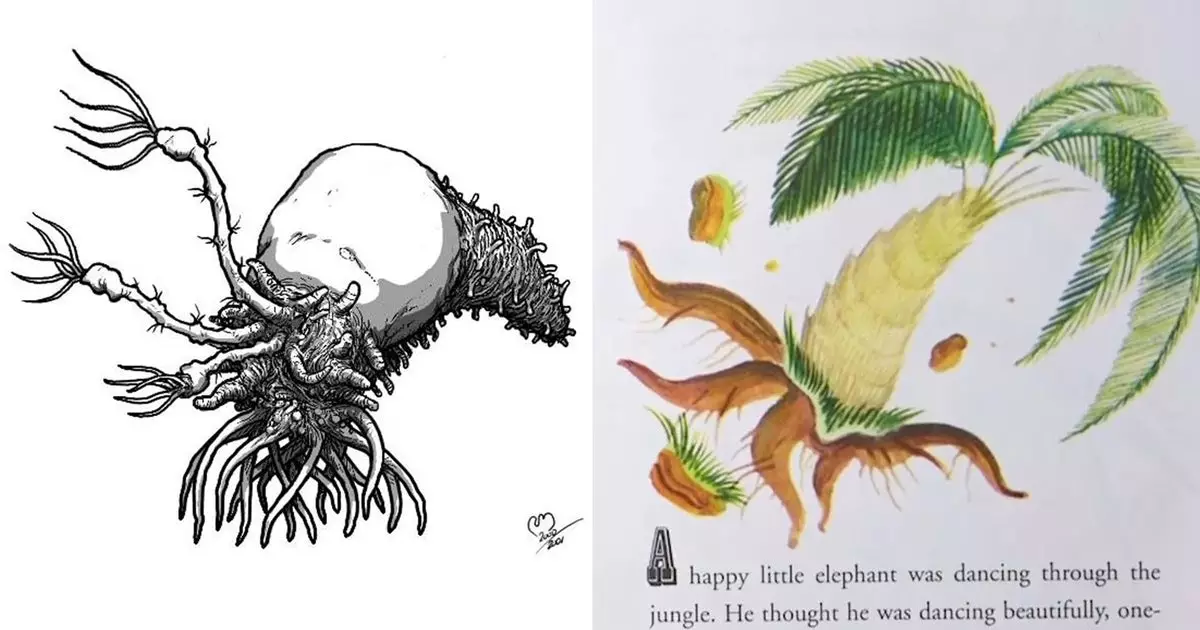This past weekend marked the 20th anniversary of Halo 2, one of the seminal entries in the gaming world that revolutionized first-person shooters and introduced players to rich multiplayer experiences. As fans took to forums and live streams to celebrate the game’s legacy, a trove of insights surfaced, shedding light on the creative processes and challenges that shaped the sequel back in 2004. An interview conducted by Rolling Stone with two key figures from Bungie’s development team provided a treasure chest of anecdotes, particularly about the unexpected inspirations behind the game’s formidable enemies—the Flood.
One of the most intriguing revelations from the interview was how the Flood’s unsettling design was partially inspired by an innocent children’s book. Lorraine and Robert McLees, a husband and wife duo integral to the development of Halo 2, shared how their backgrounds and personal experiences influenced their contributions to the game. Robert McLees, a weapons designer, took an unusual leap into alien biology by being tasked with conceptualizing the Flood. The transformation from an early concept that was described as a “cross between a house centipede and a blood sausage” to a refined version was pivotal. The final design, he noted, emerged from memories of children’s literature, specifically “The Saggy Baggy Elephant.”
The realization that a charming depiction of playful elephants birthed one of gaming’s most terrifying foes demonstrates the layered complexity of game development, wherein creativity often flourishes from unexpected sources. This intersection of innocence with horror delights and chills, making players appreciate the intricacies of storytelling and design in the Halo universe.
However, the interview also painted a sobering picture of life at Bungie during the production of Halo 2. The studio, which, at the time, had a smaller team compared to today’s blockbuster game productions, relied on a series of intense work cycles, known colloquially as “crunch.” Robert McLees illustrated this harrowing experience with a striking remark, highlighting how the frenzy of development threatened the very existence of Bungie as a company. “The crunch on Halo 2 was intense,” echoed another lead engineer who described the months filled with long hours and relentless stress, underscoring the emotional toll it took on the developers.
Lorraine’s insights further emphasize the adverse effects of this work culture. She recounted the challenging balance of nurturing a newborn while laboring under immense pressure to deliver a groundbreaking game. Such personal sacrifices, while commendable, expose the often dark underbelly of game development where passion for the craft can lead to burnout and dissatisfaction among creators.
These experiences resonate deeply with current trends in the gaming industry, where crunch remains a contentious issue. Studios like those behind Star Citizen and Diablo IV have faced their share of backlash over the imposition of grueling work hours on employees, illuminating that the challenges of intense labor and mental health concerns within the industry remain unresolved decades later.
Nevertheless, amidst the struggle, the talent that emerged from Bungie during this period redefined the landscape of interactive entertainment. With Lorraine’s work on the famous Pillar of Autumn spacecraft becoming a lasting emblem of human ingenuity in the Halo universe, every element of design is imbued with passion—remarkably combining the artistic with the technical.
As we honor the legacy of Halo 2, we also confront the realities of its creation. The anniversary offers not just a chance to reminisce about our favorite maps and multiplayer experiences; it also presents an opportunity to reflect on the people who faced extraordinary challenges to bring cinematic storytelling and engaging combat to life. The voices of Lorraine and Robert McLees serve as a reminder of the importance of recognizing and improving the conditions under which creative minds work.
Every game carries a history—the joyous moments of play and the trials endured behind the scenes. As we venture into the future of gaming, it is essential to hold onto the spirit of innovation while advocating for better working environments for the artists and engineers who ensure that our gaming experiences continue to inspire and entertain.


Leave a Reply